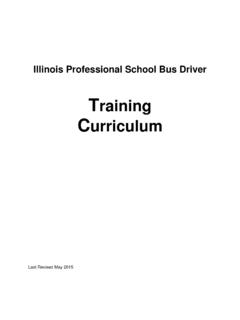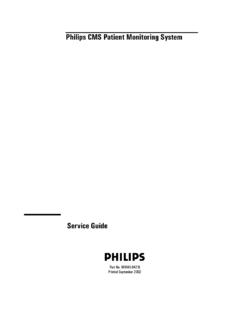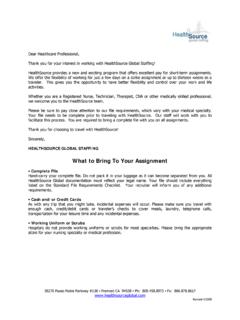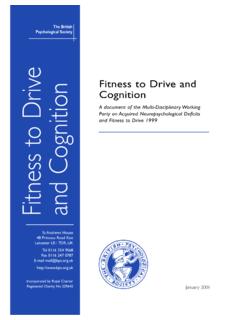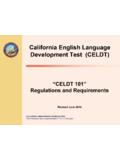Transcription of The Exercise Motivations Inventory - Living Strong Fitness ...
1 The < Strong >ExerciseStrong > < Strong >MotivationsStrong > < Strong >InventoryStrong > David Markland , School of Sport, Health & < Strong >ExerciseStrong > Sciences, University of Wales, Bangor The Original EMI. A common theme emerging from a variety of theoretical approaches to the problem of < Strong >ExerciseStrong > adherence concerns the role of individuals' reasons for exercising (participation motives) in determining long-term adherence to regular physical activity. The EMI (Markland and Hardy, 1993) was developed as a means of assessing participation motives in order to examine such issues as the influence of motives on < Strong >ExerciseStrong > participation, how such motives might influence the choice of activities undertaken, how affective responses to exercising may be influenced by reasons for exercising and how involvement in physical activity might have a reciprocal influence on participation motives.
2 In particular, the authors developed the instrument to examine questions concerning the functional significance of < Strong >ExerciseStrong > motives from the perspective of Deci and Ryan's (1985) self-determination theory. The development and initial assessment of the reliability and validity of the EMI are described in Markland & Hardy (1993). The EMI subscales have been found to discriminate between women taking part in community aerobics classes and members of a Weight-Watchers group taking part in aerobics as part of the weight reduction programme (Markland, Ingledew, Hardy and Grant, 1992). In an interesting study by Ingledew, Hardy and de Sousa (1995) EMI weight management scores were differentially predicted amongst males and females by body mass index and body shape dissatisfaction.
3 Markland (1999), in a test of the self-determination theory prediction that motives could be experienced as internally controlling or internally informational, found that < Strong >ExerciseStrong > motives as measured by the EMI differentially predicted perceptions of autonomy and < Strong >ExerciseStrong > interest-enjoyment. The EMI-2. Whilst the original EMI appeared to be an adequate means of assessing individual's participation motives, we remained concerned about weaknesses with the < Strong >FitnessStrong > and health-related subscales. Specifically, the EMI did not assess some obvious < Strong >FitnessStrong > -related reasons for exercising ( strength, endurance, etc.)
4 And the health-related subscales focused on the avoidance of ill-health, neglecting potential positively-oriented health-related motives. In addition, the wording of the instructional set made the EMI only applicable to individuals who currently < Strong >ExerciseStrong > . A number of users or potential users of the EMI had pointed out that it would be useful to assess the reasons that non-exercisers might have for taking up < Strong >ExerciseStrong > . A second version of the EMI (EMI-2) was developed to address these problems and to improve some of the other subscales. Further items were generated and the instructions and item stem were modified to make the EMI-2.
5 Applicable to both exercisers and non-exercisers. The new version comprises fourteen subscales. The factorial validity and invariance of the factor structure across gender were rigorously tested using confirmatory factor analytic procedures (Markland and Ingledew, 1997). More recently I tested the invariance of the factor structure across exercisers and non- exercisers and found that it holds up well for both populations (unpublished). The EMI-2 has been found to discriminate between individuals at different stages in the stage of change for < Strong >ExerciseStrong > and to predict change in stage across a three month period in ways that are consistent with self-determination theory (Ingledew, Markland and Medley, 1998).
6 The < Strong >ExerciseStrong > < Strong >MotivationsStrong > < Strong >InventoryStrong > Using the EMI-2. The EMI-2 has attracted considerable attention from researchers around the world. To the author's knowledge it has been translated into at least Spanish, German, Hungarian and Turkish (see other language versions). Researchers are welcome to use the EMI-2. The instrument and scoring key can be found on pages 3-7. Dr. Sudesh Kannan has created an Excel spreadsheet for scoring the EMI-2. You can download it at Simply enter the item scores in the column labeled C and the subscale scores will be calculated automatically and displayed at the bottom of the spreadsheet.
7 Some EMI and EMI-2 references Ingledew, , Hardy, L. and de Sousa, K. (1995). Body shape dissatisfaction and < Strong >ExerciseStrong > < Strong >MotivationsStrong > . Journal of Sports Sciences, 13, 60. Ingledew, , Markland, D. and Medley, A. (1998). < Strong >ExerciseStrong > motives and Stages of Change. Journal of Health Psychology, 3, 477-489. Ingledew, & Sullivan, G. (2002). Effects of body mass and body image on < Strong >ExerciseStrong > motives in adolescence. Psychology of < Strong >ExerciseStrong > and Sport, 3, 323-338. Markland, D. (1999). Internally informational versus internally controlling < Strong >ExerciseStrong > motives and < Strong >ExerciseStrong > enjoyment: The mediating role of self-determination.
8 In P. Parisi, F. Pigozzi, & G. Prinzi (Eds.) Sport Science '99 in Europe. Proceedings of the 4th Annual Congress of the European College of Sport Science. Rome: University Institute of Motor Sciences. Markland, D. and Hardy, L. (1993). The < Strong >ExerciseStrong > < Strong >MotivationsStrong > < Strong >InventoryStrong > : Preliminary development and validity of a measure of individuals' reasons for participation in regular physical < Strong >ExerciseStrong > . Personality & Individual Differences, 15, 289-296. Markland, D. & Ingledew, (1997). The measurement of < Strong >ExerciseStrong > motives: Factorial validity and invariance across gender of a revised < Strong >ExerciseStrong > < Strong >MotivationsStrong > < Strong >InventoryStrong > .
9 British Journal of Health Psychology, 2, 361-376. Markland, D., Ingledew, , Hardy, L. and Grant, L. (1992). A comparison of the < Strong >ExerciseStrong > < Strong >MotivationsStrong > of aerobics participants and weight-watcher exercisers. Journal of Sports Sciences, 10, 609-610. The < Strong >ExerciseStrong > < Strong >MotivationsStrong > < Strong >InventoryStrong > The < Strong >ExerciseStrong > < Strong >MotivationsStrong > < Strong >InventoryStrong > 2 (EMI-2). By David Markland, On the following pages are a number of statements concerning the reasons people often give when asked why they < Strong >ExerciseStrong > . Whether you currently < Strong >ExerciseStrong > regularly or not, please read each statement carefully and indicate, by circling the appropriate number, whether or not each statement is true for you personally, or would be true for you personally if you did < Strong >ExerciseStrong > .
10 If you do not consider a statement to be true for you at all, circle the 0'. If you think that a statement is very true for you indeed, circle the 5'. If you think that a statement is partly true for you, then circle the 1', 2', 3' or 4', according to how strongly you feel that it reflects why you < Strong >ExerciseStrong > or might < Strong >ExerciseStrong > . Remember, we want to know why you personally choose to < Strong >ExerciseStrong > or might choose to < Strong >ExerciseStrong > , not whether you think the statements are good reasons for anybody to < Strong >ExerciseStrong > . It helps us to have basic personal information about those who complete this questionnaire. We would be grateful for the following information: Your age years Your gender male/female Not at Very all true true for me for me Personally, I < Strong >ExerciseStrong > (or might < Strong >ExerciseStrong > ).

